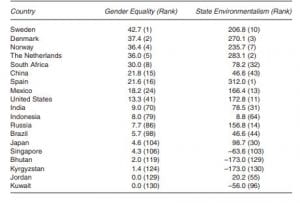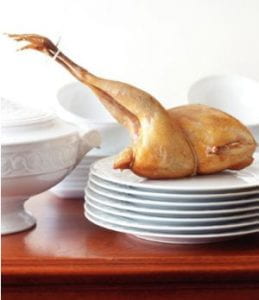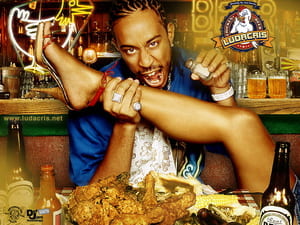Norgaard and York found that there was a correlation between nations that tended to be more favorable to women in society and government, also tended to be environmentally conscious. “We reviewed a number of compelling theoretical reasons to expect that nations, where women have greater political power, will be more inclined toward supporting environmental protection.” (Norgaard and York, 519). They concluded that when women are more involved in the government the government tended to take a stance that protected the environment from continual degradation. Norgaard and York concluded that is the world was to fight the war on climate that women should become a more integrated part of the government, “These results suggest that theories of gender can contribute to both our understanding of state behavior and the relationship between society and the natural environment”(519). Their suggestion center around the idea that women tend to be more pro-environmental, more likely to participate socially, disproportionately suffer from environmental degradation, and that the resolutions of both sexism and environmental downfall are linked and can benefit from one another.
Although I believe there is a lot of individual validity in their statements, for example, I believe women are a vital part of not only society but government affairs, as well that I believe in protection for the environment. Where the two lose me is the causation between the two. I think the difference is masked by the overall changing times and progression. For the most part, if you look at countries on the forefront of fighting climate change tend to be on the more post-industrial age of their economies, more progressive in their beliefs, and more accepting of change in the current world. For the most part, just by using the chart provided in the article placed below, the countries who have some of the highest environmentalism levels are also some of the most progressive ideological nations in the world, with cultures that reflect a respect for others and lives. These countries tend not only to respect women and place them at a higher level than most other nations but generally are accepting of other cultures, peoples, changes in ideas, and in some have a strong more significant culture associated with the environment. I think the correlation between women being in government and the increased environmentalism has to do with the countries willingness as a whole to accept new, changing ideas, that are seen as progressive; and as more people are able to participate in government more ideas are shared and collaborated with. When more people and brainpower is being used toward the goal of running a country it is less likely for individuals to take advantage of their positions and for new ideas to be expressed and discovered for the countries’ use. This increase of participation, thus brain power, combined with the countries’ acceptance to change in ideals and generally ideology gives these countries an advantage when looking between the correlation between women and environmentalism.
The other point that troubles me with this data is how in some cases how contradictory it is when looking at countries like China. Where women have very little government roles, despite being high in gender equality they are very low in environmentalism. Or when you examine the highest-ranking environmentalism country, Spain, where gender equality is outside the top 15 in the world, or Jordan whose environmentalism is ranked 55th but has almost no gender quality. I think although there may be truth in the idea that countries with higher gender equality may be a shift more towards an environmentalist agenda, but I think to say that just because women are involved in the government and treated more equally does not mean that that is the driving force for why these countries act as they do. I think a larger role can be shown with a thing like GDP which indicates that when increased to a level above 5,000$ per capita that people generally begin to show more concern for their own and environmental health.”Environmental degradation overall (combined resource depletion and pollution) is
worse at levels of income per capita under $1,000. Between $1,000 and $3,000, both the economy and environmental degradation undergo dramatic structural change from rural to urban, from agricultural to industrial. A second structural transformation begins to take place as countries surpass a per capita income of $10,000 and begin to shift from energy-intensive heavy industry into services and information-technology intensive industry” [Panayotou (P), 1993, page 14]. (Ekins, 1)
The first article I picked was for a woman that I have been following politically recently, Alexandria Ocasio-Cortez of New York. One of the main reasons I have a lot of political respect and follow representative Cortez was her willingness to stand up for an issue that is often overlooked and mispresented. Some may even call the green party as political suicide because if the ramification or are even thought to have led to an economic slowing the politician is often quickly cast out, especially one as young as herself. She was willing to stand up for the issue she believed in and make a push for an idea that is often shunned or rarely politically fought hard for. She not only fought hard for the Green New Deal, was but continued to fight, raise awareness on the issue, and add to her political supporters in the issue. She was willing to do a lot of the work that many others were not, risking her political career to do so. She represents the idea that as women come up in terms of their role in society they will continually raise the issue of environmental protection, that York and Norgaard expressed.
(the picture below is a nytimes articles, that should be hyperlinked to the picture, if not https://www.nytimes.com/2019/02/21/climate/green-new-deal-questions-answers.html?ref=oembed )
https://www.nytimes.com/2019/02/21/climate/green-new-deal-questions-answers.html
The next lady I bring up is Greta Thurberg, I decided not to attach an exact article but rather just use her journey in general to emphasis my point. She is the next step in ecofeminism, with the push for women to not only voice their opinion but for it to be heard, focused on, examined, utilized, and worked with. She continually voices her objections for the lack of environmental integrity we have as a species, believing we are living far beyond our means. Without young women like her, there would be no future for the party or people to engage with younger audiences, who are often the most concerned with climate change and global warming.
The other reason I decided to use Greta is to bring up her opposition, another young female named Naomi Seibt, dubbed with anti-Greta. She has used the same platforms to voice an opposing viewpoint on the subject, that more often times than not contradicts Greta. Naomi brings up the point of the utilization of petroleum in more aspect in our lives than we realize, and the general viewpoints of the opposition. What strikes me about this is, and other women in political power for often opposed environmental actions, for example, Sarah Palin. The idea that I think should be expressed even more is that women should be able to make their own opinions and formulate their own thought, then express them however they see fit. I think the more important issues to focus on is allowing all people to express their ideas, study what they wish, and how they wish. The more information that is out there, and available the more people are able to learn about the issues at hand. I think what holds environmentalism back the most, is not that men are often the ones in power because many women come to the same anti-environmentalism that many men come to, but rather a particular nations ability to accept change, the difference in opinion, and the fact their first notions or intuitions may be wrong.
A couple of quotes and figures, from Female Labor, Western Culture and Growth in the Gulf Cooperation Council Countries.
Witte, Mark David. “Female Labor, Western Culture and Growth in the Gulf Cooperation Council Countries.” Review of Middle East Economics and Finance, vol. 7, no. 1, Apr. 2011. EBSCOhost, doi:http://www.degruyter.com/view/j/rmeef.
“Moreover, a 1 percent increase in the female percentage of total labor creates GDP growth equivalent to a 2 percent increase in the international price of oil.”
“the paper finds a positive relationship between the female percentage of total labor and per capita U.S. book expenditures.”
I Chose this article to represent the picture because it shows that women of the world cannot be ignored, and for many countries pose an extremely viable form of labor and capital. The more people working on ideas that better the country the better the country. Women come with a different viewpoint and perspective, offering ideas and ways to work that many men don’t think of. They also represent 50% of the total population, which is a significant market share and opportunity for growth among nations.





